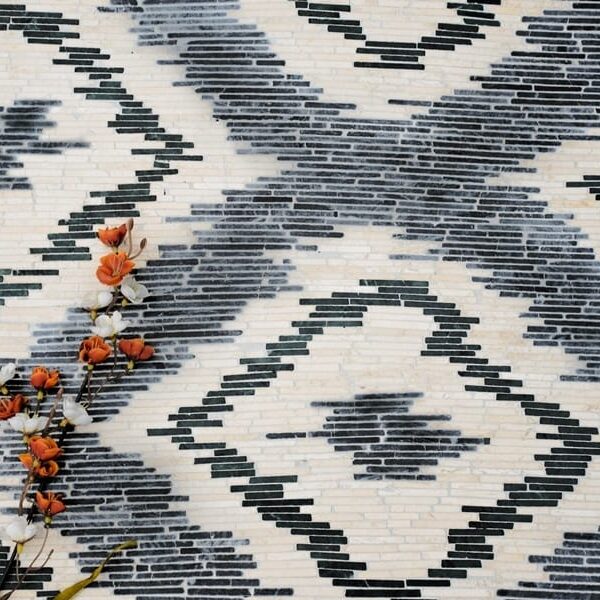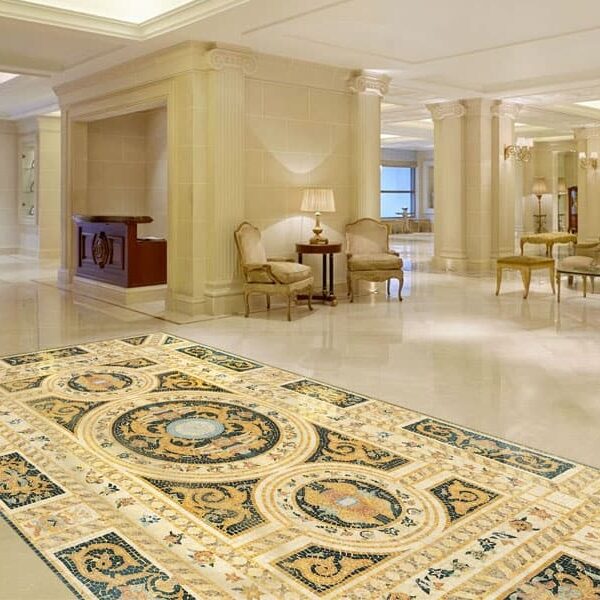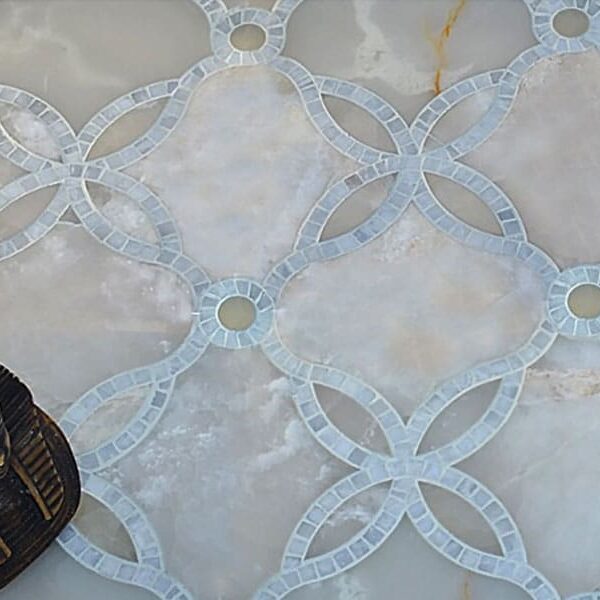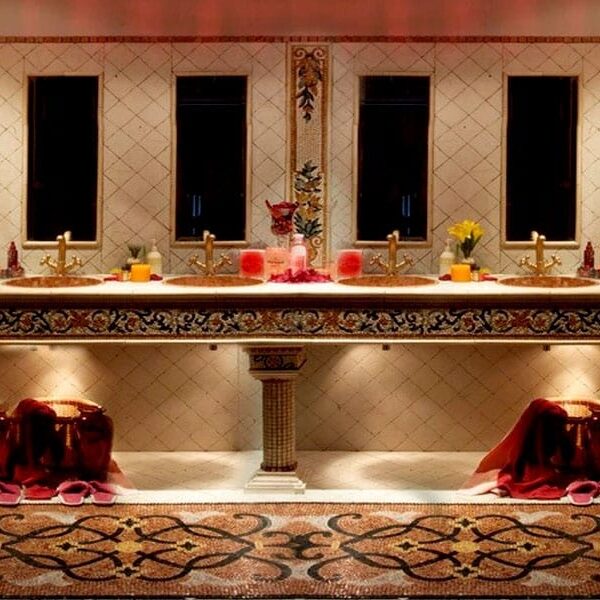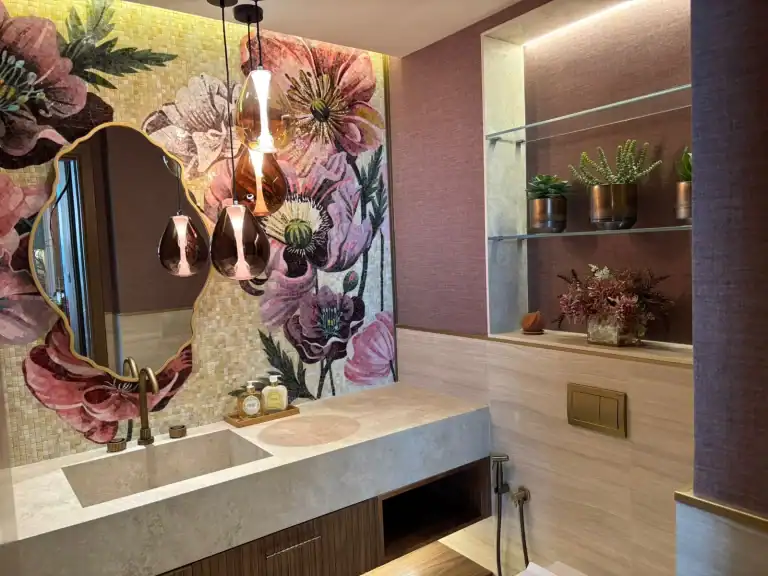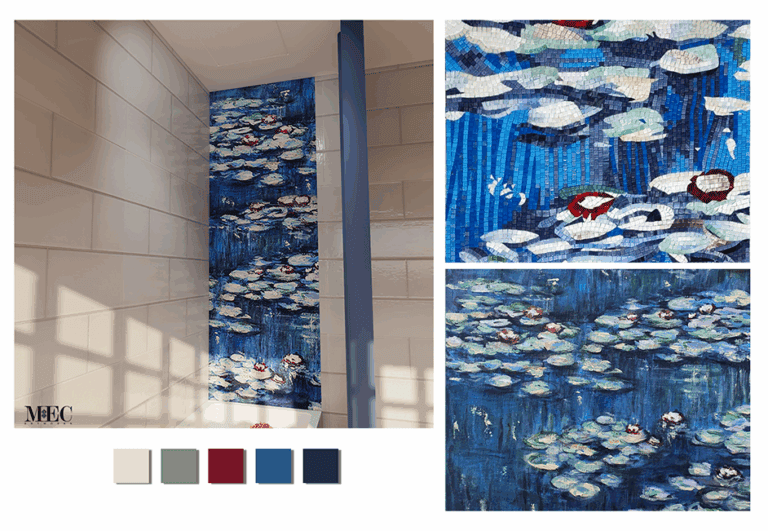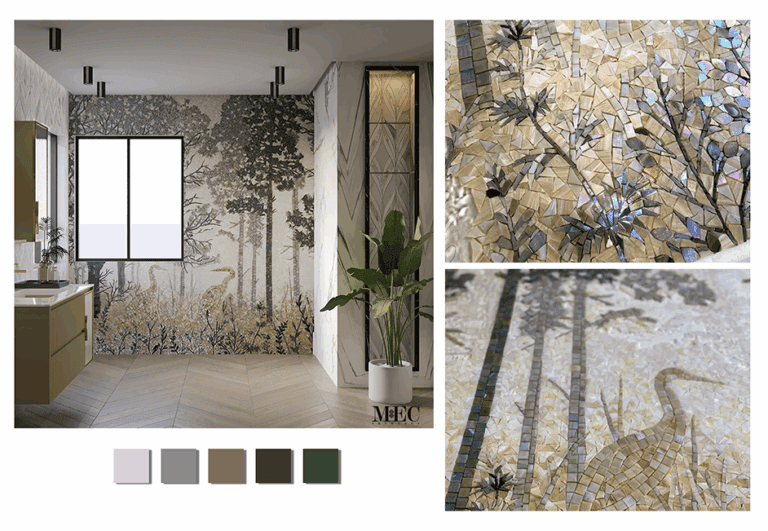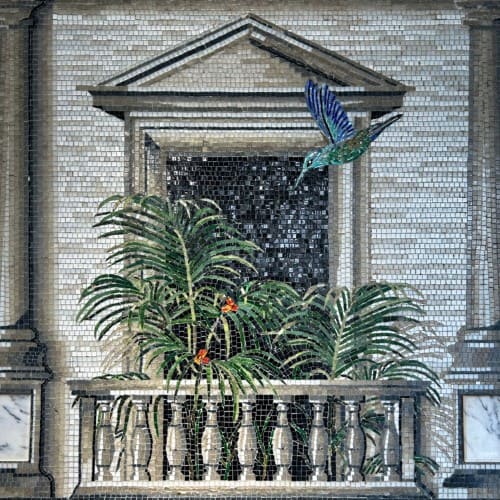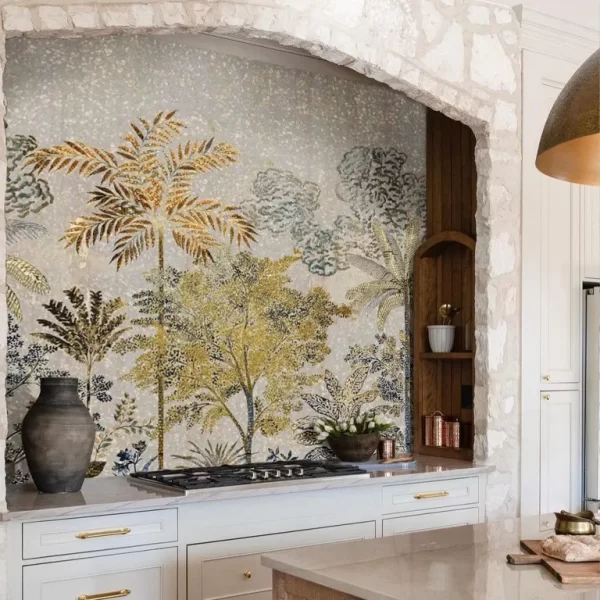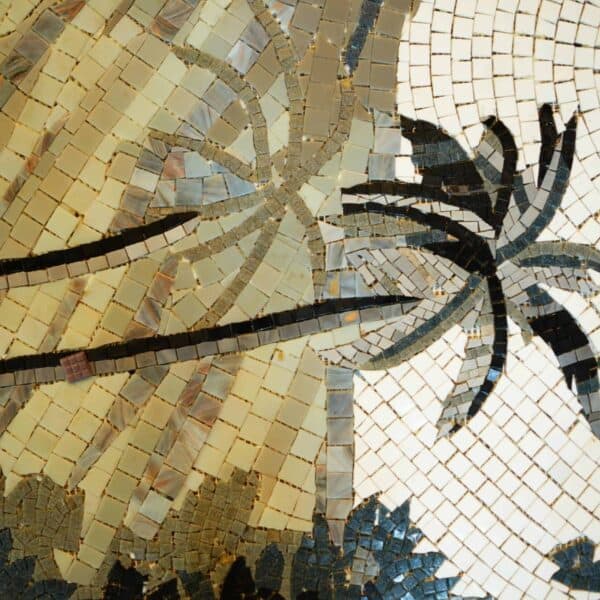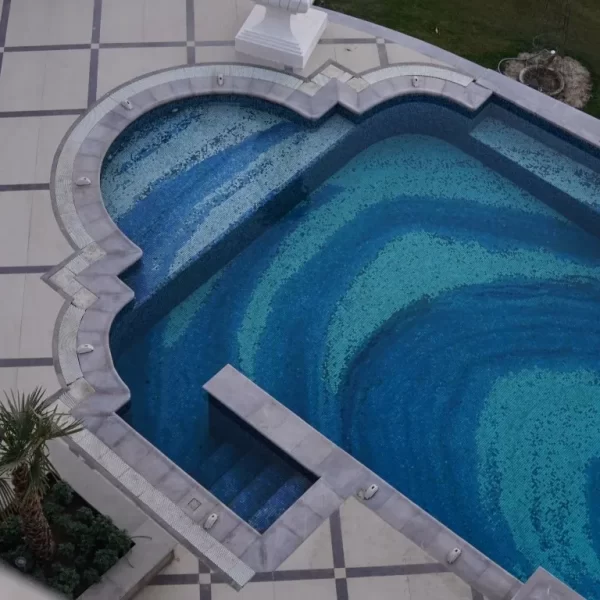The Vienna Roman Floor Mosaic depicted in the image is a remarkable piece of craftsmanship that reflects classical Roman aesthetics through intricate geometry, well-balanced color schemes, and highly durable construction.
Design and Composition
-
Pattern and Geometry:
The design features a central crisscrossed rhombus interlaced with diagonal bands, forming an intricate star-knot motif. Four mirrored angular shapes emerge from the central pattern and extend symmetrically toward each corner of the square panel. Interlocking elements add visual depth and a sense of movement, exemplifying Roman innovation in spatial geometry.
-
Tile Arrangement:
The layout consists of small, uniformly cut tesserae (mosaic tiles) which create clean edges and a highly detailed surface.
Color Scheme
-
Primary Colors:
White/Beige background dominates the field to provide contrast and brightness, making the design pop. Black tesserae used for the main outlining of the geometric shapes, adding bold definition. Terracotta Red offers a warm, earthy tone that complements the neutral base. Gray-Green accents seen in some alternating checkerboard patterns, subtly enhancing dimensionality.
Shape and Spatial Dynamics
-
Overall Shape: The mosaic is designed within a square boundary, ideal for central floor placements such as atriums or large halls.
-
Visual Balance: Each quadrant of the design mirrors the others, creating a harmonious and balanced visual composition.
-
Layering Technique: The interlacing lines create an illusion of overlapping bands, adding depth and three-dimensionality to a flat surface.

